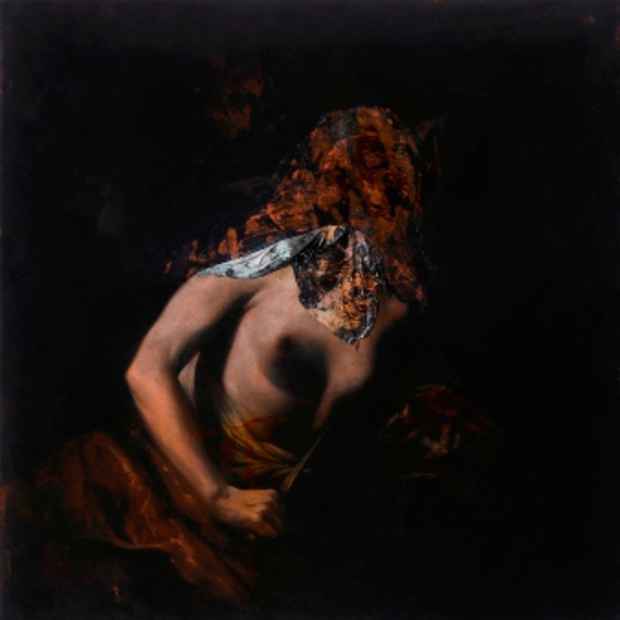"Point of Entry" Exhibition
Ana Cristea gallery

This event has ended.
Ana Cristea Gallery presents "Point of Entry", a group show that brings together the work of three remarkable artists: Oliver Clegg, Daniel Pitin and Nicola Samori. The artists are all figurative painters concerned with the relationship between the surface they paint on and the subjects they depict. Each painter approaches this way of working from his own unique perspective, but each is concerned with how the viewer becomes implicated in the journey of the expression and resolution of the artist's ideas and feelings. Art, particularly painting has the ability to render that which is invisible, visible. Atmospheres and memories can be translated into a form that can not only be seen but also felt. With this in mind, the question of how the viewer can 'enter' a painting becomes even more pertinent.
In the case of Oliver Clegg, the process is enabled through the associative power of the found object and its 'ready-made' history. Child's play is a motif that runs throughout Clegg's work. His paintings of discarded toys are executed on objects such as found drawing boards or school desks. Clegg is sensitive to the significance of ordinary objects transformed in the hands of writer or artist. While still at school Clegg collected old drawing boards, prizing them for their scratchings, doodles, and unique history of someone else's life. By working with these and other artefacts such as blanket boxes, chess sets, old diaries and more recently, prayer desks, Clegg allows the viewer to wander between narratives and worlds, uniting extant references with new images, or creating entirely new ones, recalling Duchamp. Clegg is also inspired by past masters and movements, particularly the Baroque period, as can be seen from his depictions of dramatically lit figures and still lifes. The elements one associates with this era: vanitas, chiaroscuro and a dramatic sense of theatre, run a vivid course through Clegg's work, situating his practice in the curious position of classically inspired conceptualism.
Daniel Pitin's darkly brooding paintings pan from dreamy landscapes to emotionally charged interiors to figures lounging on dingy sofas in dimly lit rooms. It is not hard to see that both film noir and old school detective dramas have been key sources of inspiration for Pitin. For Pitin crime films are particularly interesting because of the role of the detective who is someone with access to all levels of society while not belonging to any of them. He has the power to subvert the social strata and unearth secrets, in a way, the detective is similar to the position of the painter; he too can enter all levels of society. More than this, he can pare down the image he works with, leaving only a trace of its original essence behind like a clue in a crime scene. This glimpse allows the viewer to assume the role of detective, prompting the questions of what is happening, what has taken place. This knowledge with the artist's deliberate decision to disrupt the surface of his paintings with abrasions, scrawling and charred fragments of burned paper and canvas, provide us with the means of entering Pitin's twilight world. The artist is attracted to situations where, he says 'you are neither here nor there'. The 'normal' rules no longer apply.
It is impossible to look at Nicola Samori's paintings without thinking of skin. The works are lushly painted in the fashion of an old master, but rather than simply aping the greats of the High Renaissance or the Baroque by repeating grand motifs of history painting, he chooses to disrupt the images he depicts by focusing on the process inherent to making painting. Samori opens his surfaces as a surgeon would a body with a knife. This 'skin' itself is sometimes comprised of skin - rabbit skin glue - a size which tightens the surface. He treats the surface of his paintings as a skin: sometimes he pulls it, sometimes he uses perspective and chiaroscuro to create three dimensionality and drama. At other times he fuses subject with material imitating the act of flaying and actually creating stringy folds by cutting the canvas. His work focuses on the corporeal: every part of his practice is about teasing and testing the skin and the flesh. Samori's figures peel like skinned oranges, the floral still lifes grow skins of their own and sometimes, as if in a frenzied need to break through the skin into the puddled flesh beneath, he uses his fingers to push and scrape at the paint; the disruption of the surface being the point of entry.
[Image: Nicola Samori]
Media
Schedule
from January 12, 2012 to February 18, 2012
Opening Reception on 2012-01-12 from 18:00 to 20:00